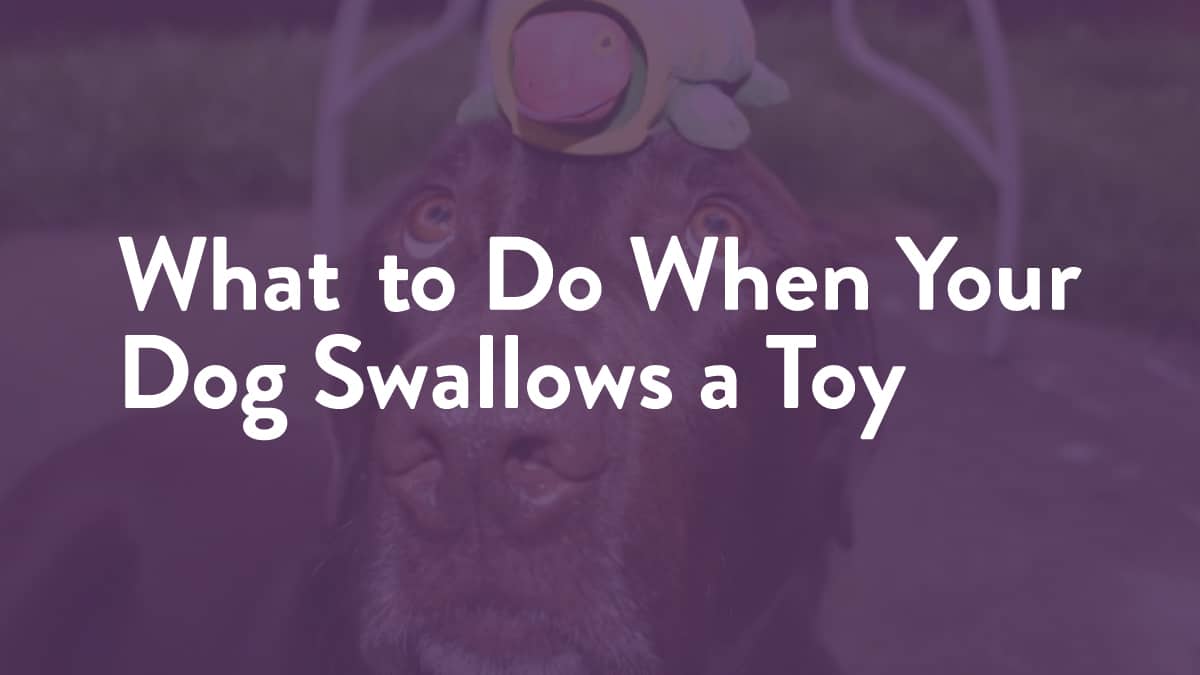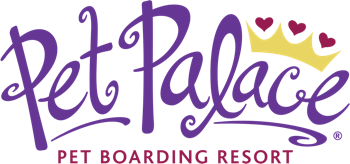What to Do When Your Dog Swallows a Toy
Posted by Lora Shaw on November 8, 2017

Dogs Swallowing Toys: Key Takeaways
- Seek Immediate Veterinary Care: If your dog swallows a toy, time is crucial. Contact your vet immediately or visit an emergency clinic. Do not attempt to induce vomiting on your own.
- Be Observant for Symptoms: Watch for signs like vomiting, lack of appetite, lethargy, and changes in behavior. These may indicate that your dog has swallowed a foreign object.
- Preventive Measures: Dog-proof your home to minimize the chances of your dog swallowing something harmful. Use dog gates, lock low cupboards, and keep small objects out of reach.
- Dispose of Damaged Toys: Regularly check your dog’s toys for wear and tear, and dispose of any that are broken or can easily break apart.
- Supervision Is Key: Always supervise your dog during playtime, even with toys that are deemed safe, to prevent accidental swallowing of toy parts or other objects.
It’s definitely an alarming experience to discover your dog has swallowed a toy. While we hope this situation never happens to you, we’d like you to be prepared if it does. The calmer you can react, the better things will be for you and your dog.
What Types of Things Will Dogs Swallow?
Actually, if a dog can fit an item into their mouth, there’s not a whole lot they won’t swallow.
In addition to chew toys, plush toys, and squeakers, dogs have also been known to eat common household items including underwear, fruit pits, gravel, golf balls, socks, corn cobs, plastic gadgets, magnets, and pennies.
What Symptoms Will a Dog Experience If They Swallow a Toy?
A dog who has swallowed a toy will often exhibit some of the following symptoms:
- Vomiting or gagging
- Painful abdomen
- Lack of appetite
- Lethargy
- Changes in typical behavior
- Diarrhea or constipation
Unfortunately, if your dog swallows a toy, there can be further complications that come along. If it wasn’t the first time, small pieces of materials could come together and form a physical obstruction. Items can also unravel and cause problems in the small intestine. Lastly, the sharp edges of plastic or bones can pierce your pup’s intestine, causing an abdominal infection. For these reasons, we recommend calling a vet immediately.
What Should I Do If My Dog Swallows a Toy?
The most important thing to know if your pet swallows a toy, or if you suspect they have, is that time is of the essence. Rather than waiting to see if it will “pass,” or attempting to induce vomiting on your own, contact your vet immediately. If it’s after-hours and your vet can’t be reached, call an emergency vet clinic.
Upon arrival at the vet clinic, your dog may receive a physical examination combined with X-rays, an ultrasound, or a doggy endoscopy to find the root of the issue.
You have about a 2-hour window before the object makes its way into the intestines. Before that occurs, there’s still a chance the object can be quickly and safely extracted. Once the toy has made its way into the intestines, your vet will probably recommend intestinal surgery, which could potentially require the removal of part of the bowel.
As PetMD puts it, “the potential severity of a simple unchewed corn cob or tube sock cannot be underestimated.” That’s why you don’t want to wait, nor do you want to try to resolve the issue at home on your own, as it could actually worsen the matter.
How Can I Minimize the Likelihood of My Dog Swallowing Something?
The best way you can keep your dog from swallowing things is by dog-proofing your house. Just like you’d keep babies from accessing areas they shouldn’t, try doing the same for your dog by using dog gates, installing locks on low cupboards, and storing foreign objects in high places.
Also, be very careful about what foods you serve to your dog. For instance, if you were to offer your dog corn or fruit, make sure the cob or any pits have been removed in advance.
Lastly, while you should always buy dog toys that are the right size and comprised of the right materials, you should still keep a close eye on your dog when they play with toys.
Other things to keep in mind to prevent your dog from swallowing a toy or other household items include:
- Dispose of well-chewed toys that can break apart easily
- Maintain a tidy home and keep things like shoes and socks off the floor
- Keep any fridge magnets out of reach
- Be sure to put away any children’s toys
- Always supervise your pet
Frequently Asked Questions on Dogs Swallowing Toys
Here are some FAQs on long-term health implications, preventative training, behavioral indicators, and more.
What are the potential long-term health implications for a dog when they have swallowed a toy?
When a dog swallows a toy and it reaches their digestive system, it can have a long-lasting impact, which is why swallowing toys is so dangerous. If a dog cannot get help quickly, consequences could include:
- Chronic digestive problems – Constant vomiting, diarrhea, or constipation are all possible.
- Internal scarring – Foreign objects in the gastrointestinal tract can lead to scarring and the narrowing of digestive passages.
- Life-threatening emergencies – In the worst-case scenario, swallowing a toy can lead to an intestinal blockage which will require surgery.
How can I train my pup not to swallow toys?
Implementing preventative training early on in your dog’s life will help protect them from swallowing nonfood objects. You can teach your dog commands such as “leave it” or “drop it,” which will reinforce good behavior and promote a safe environment for your furry friend.
Are there specific dietary considerations to reduce the risk of dogs swallowing foreign objects?
Implementing a balanced diet for your dog can help reduce the risk of swallowing a foreign object. This means feeding your dog nutritious meals and avoiding giving them food from the table. A nutritious meal can include foods with fiber, which will keep your dog full and will also help minimize their urge to chew on nonfood items.
If your dog has a habit of grabbing food from the table, they will more than likely end up accidentally eating something that they shouldn’t. That’s yet another reason why it’s important to implement healthy eating habits for your pup.
What behavioral indicators should I watch out for if I suspect my dog swallowed a toy, and what should I do if this happens?
As we discussed earlier, behavioral indicators to watch out for include changes in appetite, vomiting, or other signs of discomfort. If you start observing these behaviors, you should seek veterinary attention promptly. Delaying this can hurt your dog’s health and well-being, so it’s important to get your dog into veterinary care as soon as possible.
In some cases, your dog may need surgery depending on the severity of the situation.
If my dog needs surgery, how long is the recovery period?
If your pup undergoes surgery to remove a foreign object, the recovery period can depend on the kind of procedure required. It could take days to weeks for your furry friend to fully recover. During this time, you’ll want to carefully monitor your dog and ensure they’re healing, eating well, and not gaining access to objects that could recreate the problem.
As you monitor your companion, you will want to provide a comfortable recovery space, and you may need to administer daily medications and restrict your dog’s activities so they can fully recover without issue.
How Can I Keep My Dog Busy and Happy While I’m Away from Home?
Speaking of keeping a close eye on dogs, many pet owners find that our well-staffed doggy day care is the perfect option for those days they can’t be home to play with their pet.
Your dog will benefit from the following when they are under our care and supervision, keeping them out of trouble while you’re away working, running errands, and more:
- An individual villa with heating and air conditioning
- Quality bedding material for nap times
- Feeding sessions based on the duration of stay
- Regular fresh drinking water
- Running and exercise time
- Bathroom breaks
- Medication and health monitoring, if necessary
- Playtime with their favorite toy
At Pet Palace, we offer more than just dog sitting, and we take care of each pet as if they were our own. If you’d like to learn more, visit our doggy day care page. We also offer dog and cat boarding services for your convenience!
Keep Your Dog Out of Harm’s Way with Our Doggy Day Care
Keeping your dog safe and entertained during the day will make sure they stay out of trouble. We hope to see your pet in one of our several locations soon.
For more information on our doggy day care, be sure to reach out to our team today!

Categories: All Posts, Pet Safety, Tips for Your Pets
Archives
Recent Articles
Categories
Monthly Archive
- November 2024
- October 2024
- September 2024
- August 2024
- July 2024
- June 2024
- May 2024
- April 2024
- March 2024
- February 2024
- January 2024
- December 2023
- November 2023
- October 2023
- August 2023
- July 2023
- June 2023
- May 2023
- April 2023
- March 2023
- February 2023
- January 2023
- December 2022
- November 2022
- October 2022
- August 2022
- July 2022
- June 2022
- April 2022
- March 2022
- February 2022
- November 2021
- October 2021
- November 2020
- September 2020
- July 2020
- March 2020
- January 2020
- November 2019
- September 2019
- July 2019
- March 2019
- January 2019
- December 2018
- November 2018
- October 2018
- August 2018
- July 2018
- June 2018
- May 2018
- April 2018
- March 2018
- February 2018
- January 2018
- December 2017
- November 2017
- October 2017
- September 2017
- August 2017
- July 2017
- June 2017
- May 2017
- April 2017
- March 2017
- February 2017
- January 2017
- December 2016
- November 2016
- October 2016
- September 2016
- August 2016
- July 2016
- June 2016
- May 2016
- April 2016
- March 2016
- February 2016
- January 2016
- December 2015
- November 2015
- October 2015
- September 2015
- August 2015
- July 2015
- June 2015
- May 2015
- April 2015
- March 2015
- February 2015
- January 2015
- December 2014
- November 2014
- September 2014
- August 2014
- July 2014
- June 2014
- May 2014
- April 2014
- March 2014
- February 2014
- January 2014
- December 2013
- November 2013
- October 2013
- September 2013
- August 2013
- July 2013
- June 2013
- May 2013
- March 2013
